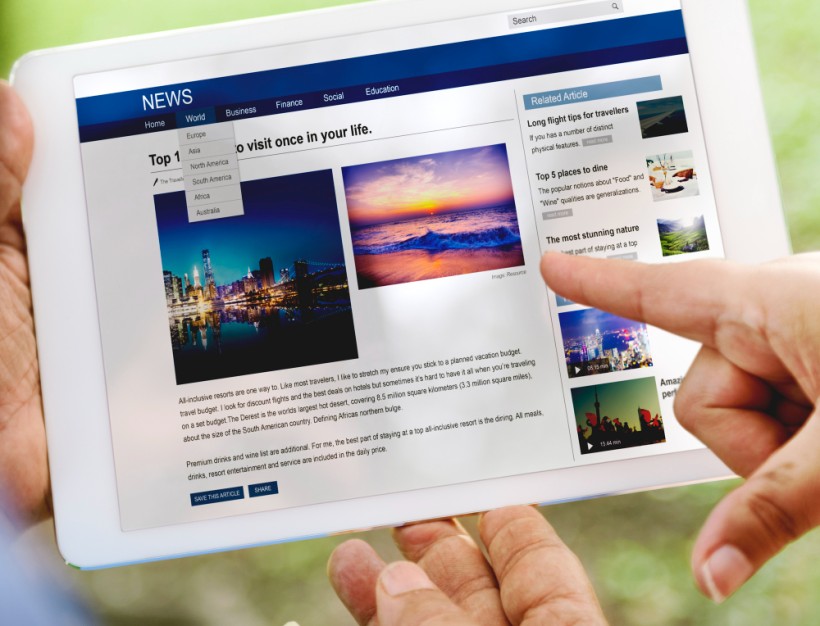Most medtech companies don’t use LinkedIn correctly. Some treat it like an afterthought, posting the occasional product update and calling it a strategy. Others ignore it altogether, assuming it’s just another social media platform.
Both approaches are a mistake.
LinkedIn isn’t Twitter or Instagram, where posts are designed for passive consumption. It’s where hospital executives, investors, and decision-makers go to find industry insights, research new solutions, and evaluate potential partners. It’s a business platform designed for visibility, trust, and credibility.
Done right, LinkedIn shortens sales cycles, builds investor confidence, and accelerates hiring. But if you’re using it the way most medtech brands do—sporadically, impersonally, and with little strategy—you’re leaving deals, funding, and partnerships on the table.
Why Most Medtech Companies Get LinkedIn Wrong
As we outlined in our Medtech LinkedIn Report, a lot of medtech brands make the same mistakes on LinkedIn. They post content that feels corporate and robotic, focus too much on product updates, or rely on their company page to do all the heavy lifting. None of it works—for three reasons.
Bulletin Board Vibes
One of the biggest problems is that companies treat LinkedIn like a digital bulletin board. They post dry, formal announcements that sound like press releases. A new funding round. A product launch. A partnership announcement. But these updates lack the one thing that makes content engaging—real stories.
A company might announce a partnership by saying, “We’re excited to collaborate with XYZ Health Systems to bring our AI-powered diagnostics to their network.” But no one cares. That’s just an update. What actually matters is what that partnership is solving.
If instead, the post said, “A year ago, XYZ Health Systems was struggling with long wait times for radiology reports. Today, they’re using our AI tool to cut delays by 40%. This is what medtech innovation looks like in action,” now there’s a reason to engage. It’s no longer about the company. It’s about impact.
Too Much Product
Another common mistake is posting only about products. A new AI tool. A software update. A feature release. But decision-makers don’t log into LinkedIn thinking, “I hope I see a product launch today.” 🤞🏽 They log in to stay informed, to learn, to find solutions to big problems.
Instead of saying, “Introducing our newest AI-powered imaging software,” a more effective post would start with, “AI-driven diagnostics are cutting radiology wait times by 40%, but adoption remains slow. Here’s why hospitals are hesitant and what needs to change.”
One is a sales pitch. The other is an insight. Insights drive engagement.
Company Page Crutch
Company pages also hold brands back. The organic reach on a LinkedIn company page is low—painfully low. Even if you have thousands of company page followers, most of them won’t see your content unless you put ad spend behind it.
But personal profiles? They get reach. LinkedIn prioritizes content from people over brands. A post from your CEO or Chief Medical Officer will always get more traction than one from your company page. If your leadership team isn’t posting, your brand is missing visibility.
How Medtech Companies Can Win on LinkedIn
Medtech brands that succeed on LinkedIn don’t rely on outdated corporate marketing. They put their executives front and center, focus on industry trends over product updates, and use paid tools to amplify their best content.
Make Leadership Visible
The first step is making leadership visible. Investors, hospital administrators, and healthcare professionals don’t want to follow a faceless company. They want to follow people.
That means your CEO should be posting about the industry, not just the business. Your R&D team should be breaking down complex medical advancements in a way that non-experts can understand. Your team should feel empowered to engage with and share content.
Educate, Don’t Just Promote
The second step is shifting from self-promotion to education. People come to LinkedIn to learn. They want to understand regulatory changes, emerging trends, and real challenges in healthcare.
When a medtech company posts about an FDA update, it shouldn’t just state the change—it should explain what it means for startups, hospitals, and payers. When AI adoption lags in hospitals, don’t just talk about AI’s capabilities.
Break down the real reasons behind the hesitation—cost, integration issues, lack of training. If your company helps people make sense of the industry, they’ll start paying attention.
Use Multiple LinkedIn Formats
Most Med Tech companies stick to plain text posts and wonder why their engagement is flat. If you’re not using different content formats, you’re handicapping your message.
Carousels grab attention by making complex topics easy to digest. Video posts humanize your brand and make insights more memorable. LinkedIn Newsletters land directly in inboxes, building a subscriber base that keeps coming back (here’s ours).
Polls and interactive posts spark discussions and boost visibility. LinkedIn Live events bring industry peers together. And best of all, you can repurpose much of your existing content into new formats.
The brands winning on LinkedIn aren’t just posting—they’re experimenting. If you’re serious about getting seen, ditch the one-format approach and start using LinkedIn the way the algorithm actually wants you to—creatively.
Distribute With TLAs
Even with great content, LinkedIn’s algorithm can bury posts. That’s where Thought Leader Ads (TLAs) make the difference. Unlike traditional LinkedIn ads, which only work on company pages, TLAs allow you to promote posts from personal profiles.
This means you can take a high-performing post from your CEO and put it directly in front of hospital executives, investors, and policymakers. Most medtech brands don’t use TLAs, which is why the ones that do see outsized results.
Share Case Studies
Finally, medtech case studies drive credibility. The fastest way to build trust isn’t by saying your product works—it’s by showing it.
Instead of posting, “Our software improves patient triage efficiency,” tell the real story. “Before using our AI tool, XYZ Health had an average triage time of 47 minutes. Now, it’s down to 22 minutes—cutting ER delays nearly in half. Here’s what made the difference.”
Data creates credibility. Stories create impact. The combination is what turns LinkedIn from a branding tool into a growth engine.
LinkedIn Isn’t Just Another Platform—It’s Where Medtech Deals Happen
Medtech companies that take LinkedIn seriously get results. A strong LinkedIn strategy doesn’t just generate likes and comments. It attracts investors, speeds up sales cycles, and builds a reputation that makes hiring easier.
The ones that get it right are already shaping industry conversations. The ones that don’t? They stay invisible.
If your company is serious about leveraging LinkedIn for growth, now is the time to get strategic. Let’s make it happen. Work with us.
Mo is the founder and CEO of Column, helping leaders shape public opinion through content and research. Connect with him on LinkedIn.





